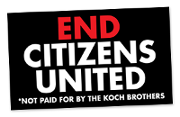Biblio
Filters: First Letter Of Last Name is S [Clear All Filters]
(1906). The Writings of Henry David Thoreau: Cape Cod and Miscellanies.
"If a man was tossed out of a window when an infant, and so made a cripple for life, or scared out of his wits by the Indians, it is regretted chiefly because he was thus incapacitated for — business! I think that there is nothing, not even crime, more opposed to poetry, to philosophy, ay, to life itself, than this incessant business." (p. 457)
(1976). Play : Its Role in Development and Evolution.
"There is a well-known rule in the psychology of learning, the Yerkes-Dodson law, that states that the more complex a skill to be learned, the lower the optimum motivational level required for fastest learning." (p. 15)
(1978). Negative criticism: Its swath of destruction and what to do about it.
"It is a little after midnight. You have just come out of the last show at the movie. To save a block you cut through a dark alley. Halfway through it—just as you are beginning to relax—two men step out of the shadows. You hear a nasty metallic snick and suddenly there is the glint of knife blades in the feeble light.
What would you do?
I know what I would do.
Quickly I'd turn and throw a fearful look back up the alley. It is clear and free. A surge of adrenalin sends the blood pumping to my legs. Getting out of that alley I set a new indoor Olympic sprint record. The jogger in me has never seen such speed. Nothing seems sweeter than the glare of street lights and the chatter of people making their way to their cars. I look for a police officer and tell my story.
That is what everybody would do in such a situation, right?
But let me play you another version. The scene is the same. The two hulking men are coming at you with knives. But you keep strolling casually on to meet them. You throw up your arms and say, 'I'm all yours. Let me feel the steel. I know it will help me in the long run.'
They oblige by savagely thrusting the knives deep into your defenseless belly. You fall to the pavement writhing with pain. The men stand over you. You roll onto your stomach and gasp, 'You'd better give me a couple in the back, too.'
Ridiculous?
Of course, but it is exactly what thousands upon thousands of us do each and every day by failing to recognize that the knives of negative criticism which people stick in us are just as sharp and deadly as those made of steel and borne by assassins." (p. 9)
What would you do?
I know what I would do.
Quickly I'd turn and throw a fearful look back up the alley. It is clear and free. A surge of adrenalin sends the blood pumping to my legs. Getting out of that alley I set a new indoor Olympic sprint record. The jogger in me has never seen such speed. Nothing seems sweeter than the glare of street lights and the chatter of people making their way to their cars. I look for a police officer and tell my story.
That is what everybody would do in such a situation, right?
But let me play you another version. The scene is the same. The two hulking men are coming at you with knives. But you keep strolling casually on to meet them. You throw up your arms and say, 'I'm all yours. Let me feel the steel. I know it will help me in the long run.'
They oblige by savagely thrusting the knives deep into your defenseless belly. You fall to the pavement writhing with pain. The men stand over you. You roll onto your stomach and gasp, 'You'd better give me a couple in the back, too.'
Ridiculous?
Of course, but it is exactly what thousands upon thousands of us do each and every day by failing to recognize that the knives of negative criticism which people stick in us are just as sharp and deadly as those made of steel and borne by assassins." (p. 9)
(1979). Organizational Psychology.
"The main conclusion will be that there is no one answer, no 'perfect' way to organize or to design work. Instead, one must become diagnostic and flexible, sensitive to events and their subjective interpretation by the participants in a given situation, so that one can choose a course of action appropriate to that situation."
(1979). Power plays: How to deal like a lawyer in person-to-person confrontations and get your rights.
"Remember, an employer who won't give you your rights when you ask for them must be convinced that it is in his interest to give you your rights." (p. 105)
(1981). Concepts in Discrete Mathematics.
(1981). Models for Management : The Structure of Competence.
"Chain of command looks good on paper, but in practice it falls far short as an effective system for arousing cooperation when basic economic conditions have resulted in men being released from industrial servitude." (p. 122)
(1981). Stress/Unstress: How You Can Control Stress at Home and on the Job.
"The value of this Self Test for Stress Levels is that if you are getting totals of 300 or more, you are well-advised to take it easy for a year or so with any major life decisions. Not making a decision to change is an acceptable option."
(1984). Common LISP: The Language.
(1984). Scenes from Corporate.
"The men and women who work in middle management and technical jobs in corporations suffer from fear, but not from cowardice. Their ability to endure fear in the struggle to achieve happiness as it has been defined for them proves that they are not cowards. They lack options. They may move from corporation to corporation, but the systems in which they live do not change with the change of employment. As they grow older, even that illusory option disappears. Then they must choose between human alienation and their accustomed standard of living." (p. 284)
(1985). Data and Computer Communications.
(1986). Management for Productivity.
"Structure should accommodate the people within the system. People vary in their skills, interests, needs, personalities. These individual differences must be accommodated by organization structures to maximize support for individual work efforts." (p. 167)
(1987). Advanced Turbo PROLOG.
(1987). Classics of Public Administration.
"The philosophy of management by directive and control—regardless of whether it is hard or soft—is inadequate to motivate because the human needs on which this approach relies are today unimportant motivators of behavior. Direction and control are essentially useless in motivating people whose important needs are social and egoistic. Both the hard and the soft approach fail today because they are simply irrelevant to the situation." (p. 260)
(1988). Algorithms.
(1988). Changing Ways: A Practical Tool for Implementing Change Within Organizations.
"A basic axiom of any change effort is that 'the further away the people defining the change are from the people who have to live with the change, then the more likelihood that the change will develop problems.'" (p. 59)
(1988). Take This Job and Love It: How to Change Your Work Without Changing Your Job.
"Burnout is of epidemic proportions because of a delay in companies' responding to the new needs of their workforce, or mismatch between what people want from their job and what the job offers them. Burnout signals not that people are working too hard but that they are not used enough. It recedes when the individual worker is empowered to make the workplace different and when the company makes a commitment to serve its employees." (p. 39)
(1989). Database Design and Management.
(C)2014 CC-BY-NC 3.0, workcreatively.org











 ]
]